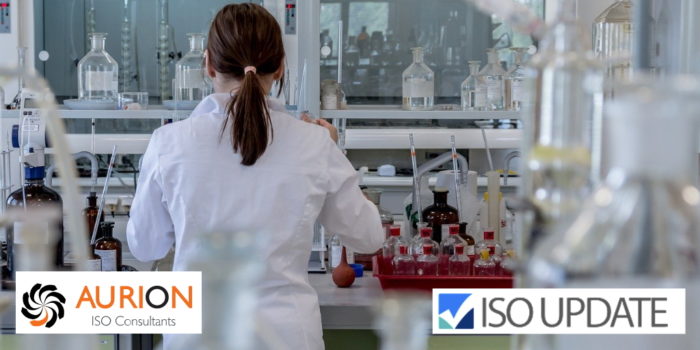What is the cost of becoming ISO Certified?
The complexity and size of an organization largely determine and influence the ISO certification cost.
The International Accreditation Forum (IAF) publishes requirements that Certification Bodies (CB) must follow to determine the audit time for your management systems audit. These requirements consider the number of employees you have working in your organization, the complexity of your activities and the number of sites from which your organization operates.
If you have contacted numerous CB’s for a quote for certification, you may notice there are discrepancies between them. These differences are often due to administrative cost variants and the audit day rate.
Day rates can vary between CB’s, as can the charges for audit prep and report-writing.
Travel expenses are billable to you, the client, and variations in cost can also occur depending on if the CB has a qualified, local auditor or if they will need to send in an auditor from a different location.
What is the cost of NOT becoming ISO Certified?
Most organizations today are in a race of relevancy, consumer demands, and customer expectations.
Obtaining customers is a difficult task, especially in today’s competitive marketplace, but retaining customers is often just as difficult with one wrong move or bad product potentially ruining your reputation.
Following are some of the costs of not becoming ISO certified:
Unmet customer requirements:
Consider, if an organization is focusing on short term payoffs and not working towards understanding and meeting customer requirements, it will negatively impact the organizational brand name and customer loyalty in the long run, which will also have an adverse effect on the company’s reputation.
Greedy and bottom-line driven organizations can face customer backlash from scandals, scathing reviews, and a bad reputation from the masses, which is extremely hard to overcome and bounce back from.
Implementing an ISO management system helps an organization consider long term goals, strategic direction, policies that are in line with goals and objectives, and risk-based thinking methodologies that are specifically designed for the organization to maximize efficiencies and, in turn, profits.
Product quality:
Like customer expectations, product quality is essential to today’s consumer.
Your customers expect that the goods and services you provide will meet their expectations. They purchase your product with an end goal in mind, and you must deliver on that promise – be it one time, or thousands of times.
Each product or service you deliver should be consistent with these expectations, if not exceeding them. Any deviation in this quality output can be the reason for a customer complaint or the loss of a customer and your reputation in their mind and circle.
Maintaining this quality day in and day out should be your main objective as an organization, and ISO Standards set out to achieve this through manageable, measurable quality systems designed specifically for your organization to ensure quality outputs on consistent bases and measures to remedy deviations before they reach the consumer.
Company objectives:
ISO certification requires the company to identify and describe various processes and objectives using business metrics. Therefore, not having an ISO Certification can leave customers and suppliers ambiguous about the organization’s goals and outcomes.
Especially for customers and suppliers who operate in other parts of the world and are purchasing overseas, purchasing from ISO Certified companies is often a requirement to satisfy their own company protocols.
Because ISO Certification is the same worldwide, companies can rest assured they are getting a quality product overseas when they purchase from ISO Certified organizations.
Employee morale and company culture:
With an ISO Certification, employees of an organization benefit from documents and clearly specified objectives, strategies and operational processes that are made specifically for them and in the easiest method for everyone to understand.
ISO makes it a point to ensure companies speak directly to their employees on how they can better the organization, work towards a strategic direction and quality plan, and how to do their job at their most efficient.
With these plans in place, employees build confidence in their abilities in their roles and the company’s active interest in their well-being.
Employees who feel confident in their job, employer, and career direction are more likely to enjoy their position and therefore build good groundwork for a sustainable and ideal company culture. It is up to your organization to build a good company culture with good people and good practices, and an ISO Certification can provide a great foundation to build on.
Monetary cost:
You can expect an average ISO Certification to cost around $3000-$5000 annually, with cost savings coming from a decrease in travel expenses and extra costs coming from the size of your organization.
The costs of an audit vary between CB’s, but typical costs include the audit time, administrative costs, and travel expenses.
While certification may seem expensive, the opportunity cost of no certificate is much greater.
Consider the number of deals you’ve lost without certification, the level of inefficiencies you run from wasteful practices and processes, and the associated long-term costs.
ISO Certification asks you to operate at your peak, work using risk-based thinking, and continuously improve.
These are all business benefits that will contribute to your long-term success.
International recognition:
Since ISO Certification is an internationally recognized standard of quality and management systems and used by millions of organizations around the world, being certified is an accomplishment that is recognized worldwide.
It is an accomplishment to be proud of, and one that not every organization can achieve, but all should strive for.
The cost of not being certified is to your international credibility and loss of potential business.
With the growth of databases that consumers and suppliers have access to verify companies’ active certifications, the consumer is more knowledgeable than ever and that is something all organizations should consider when looking to the global marketplace.
Proving your capabilities with an internationally recognized management system can help boost your credibility and trust on the world stage, and sometimes it is the only way you can compete internationally.
Want to find help with your certification? Visit our Directory Resources to find the help you need!











